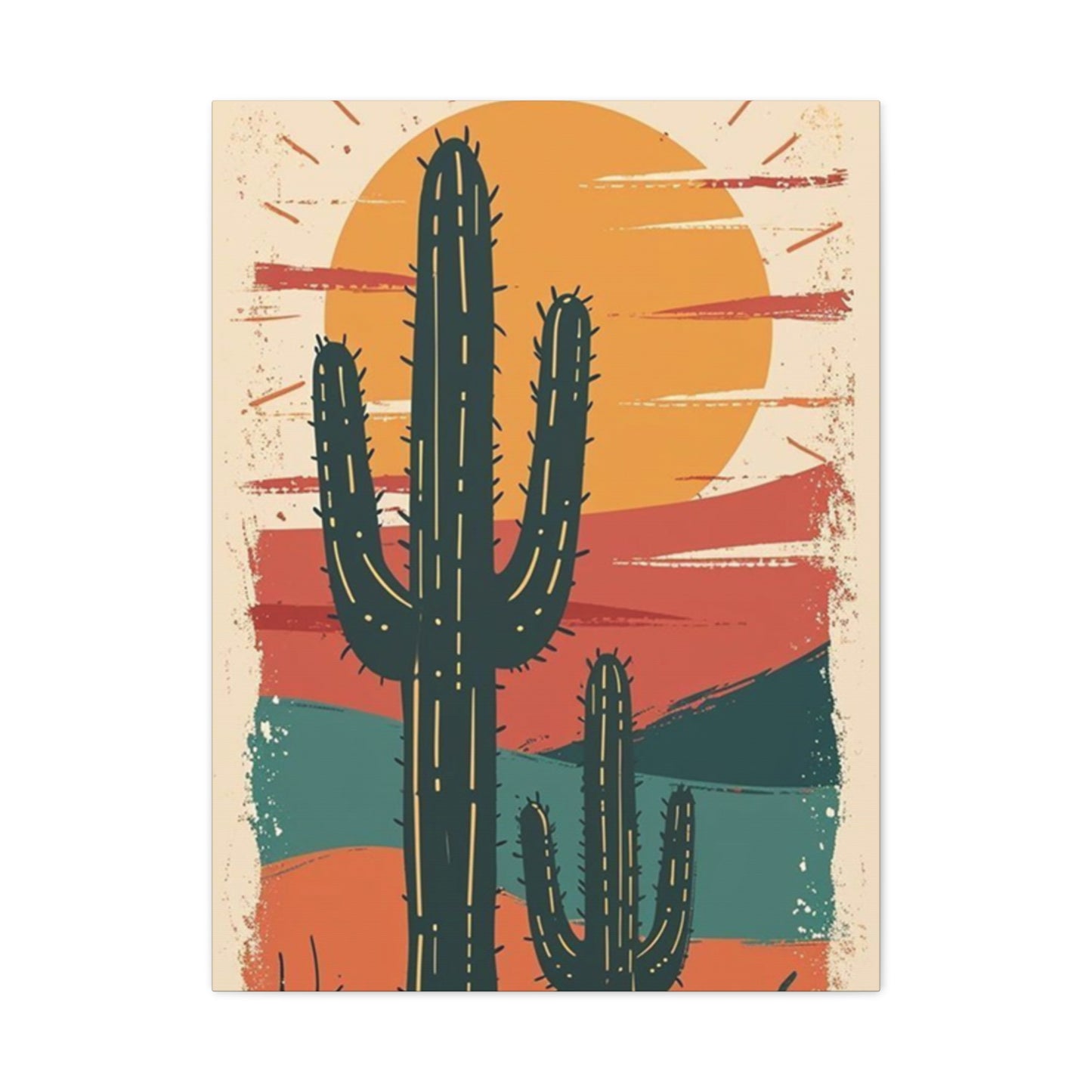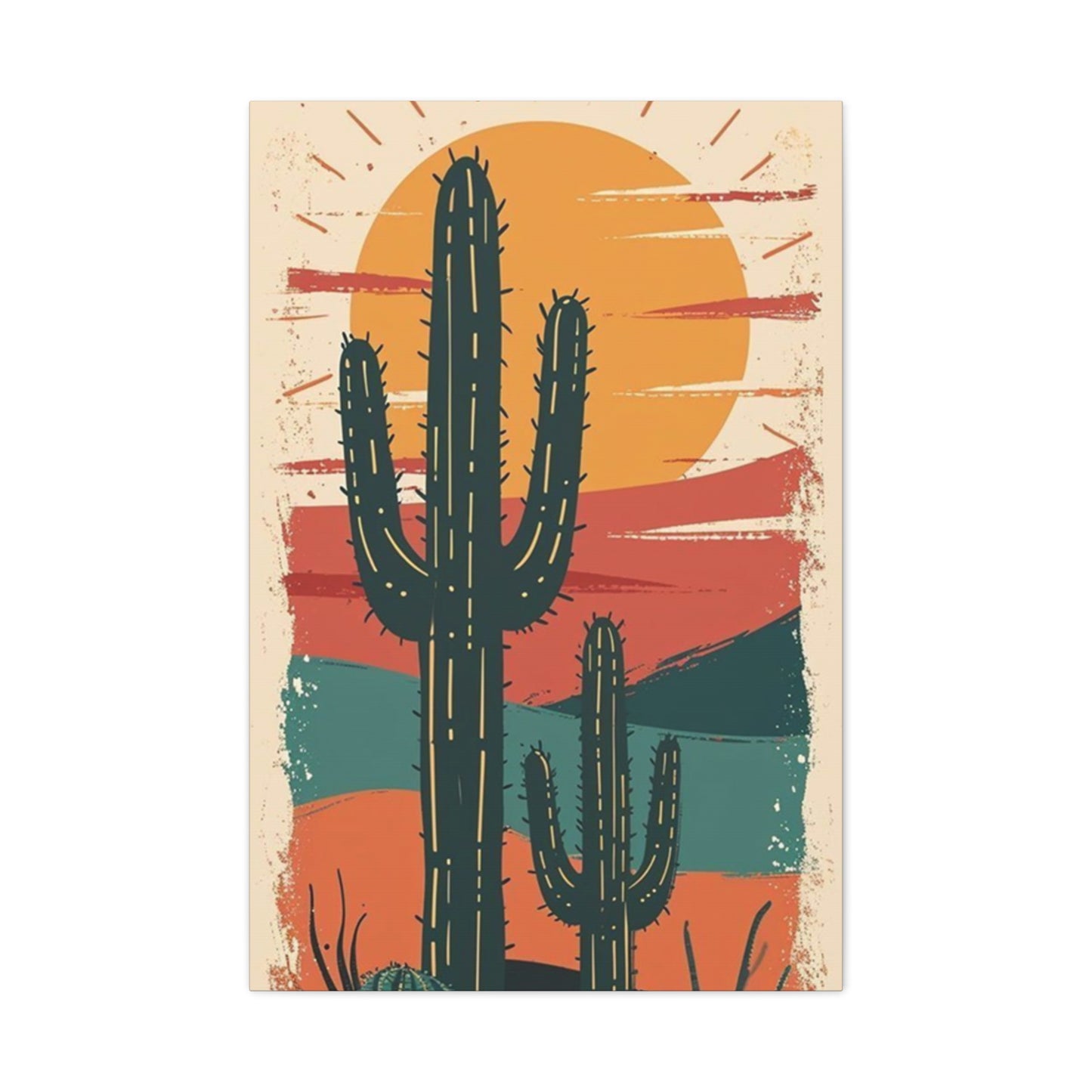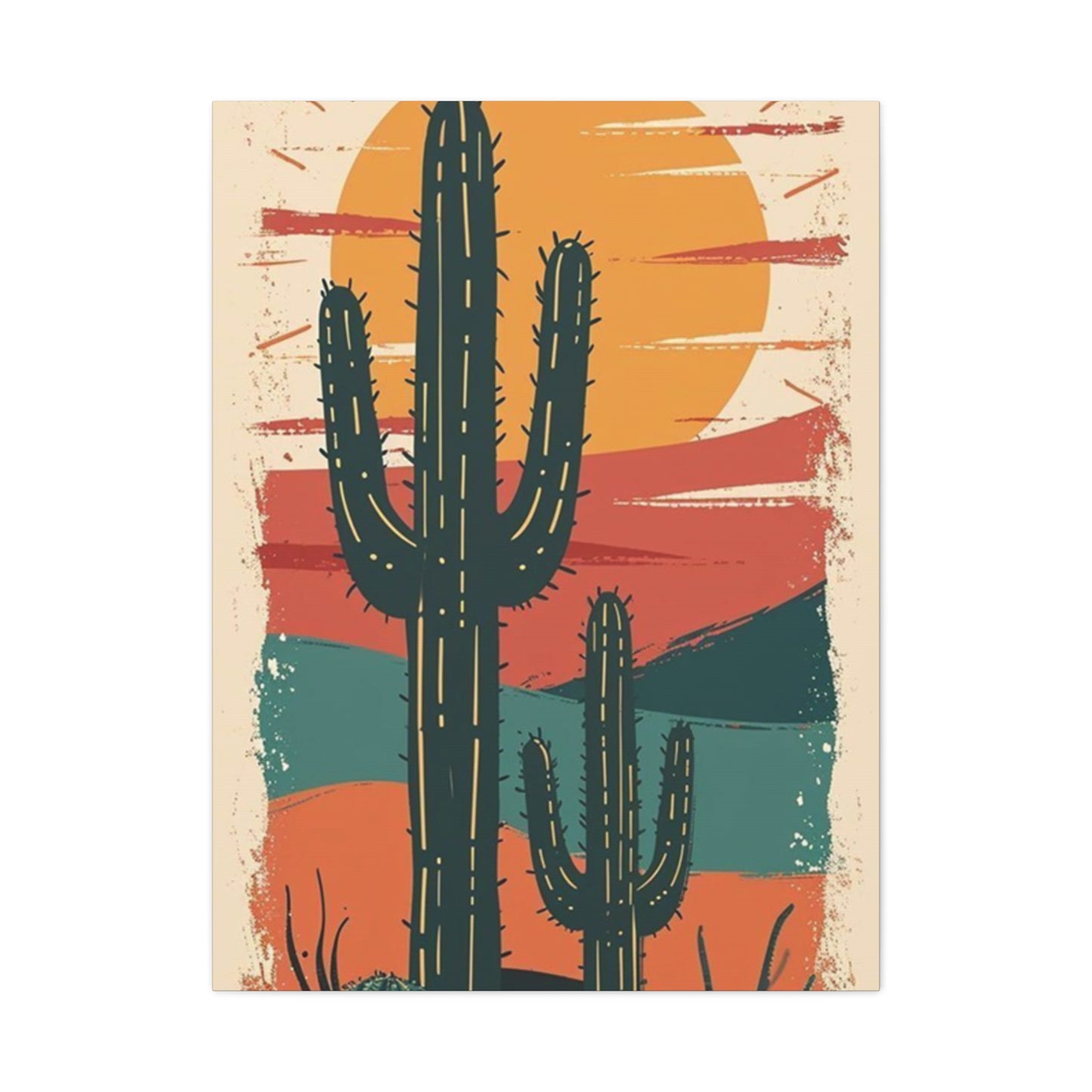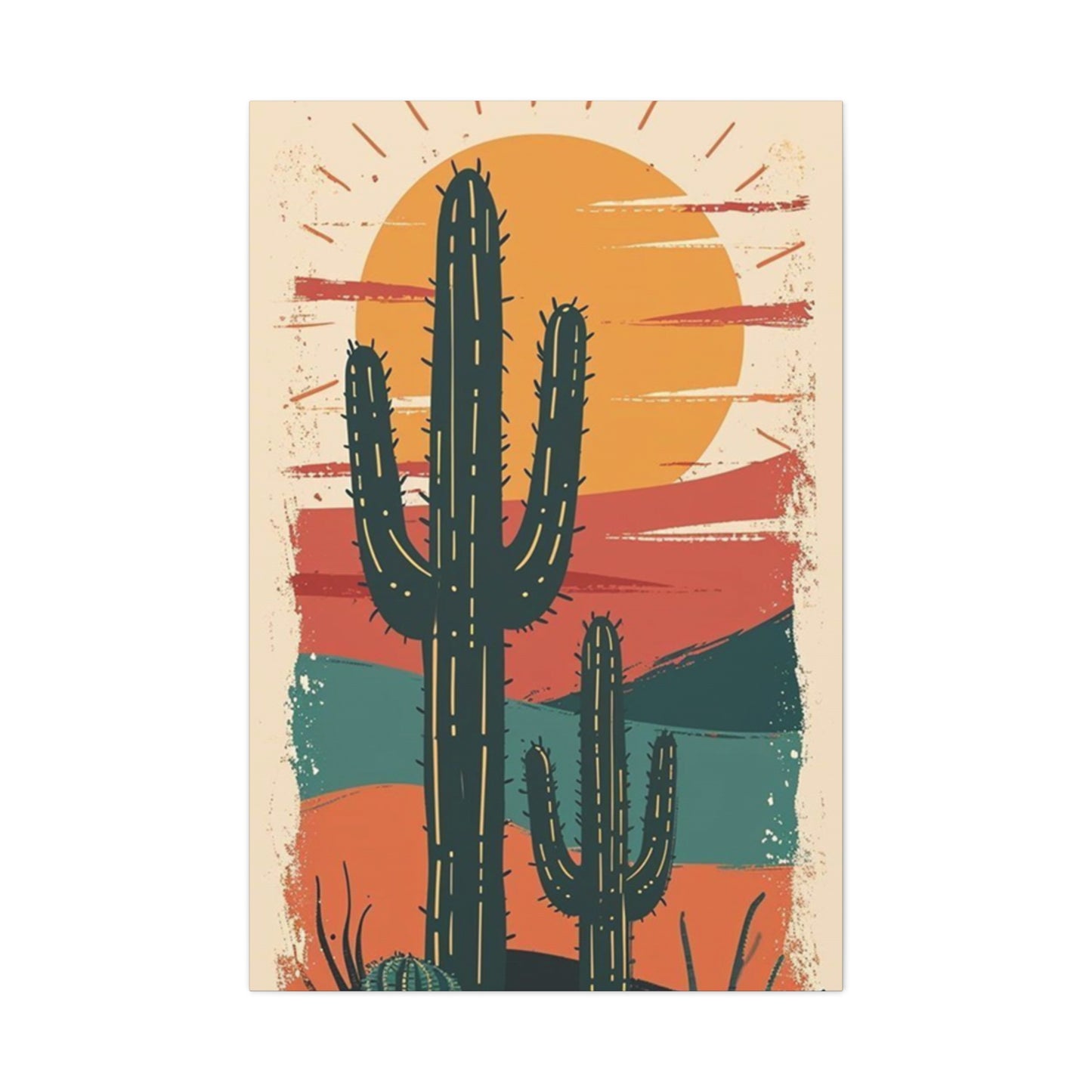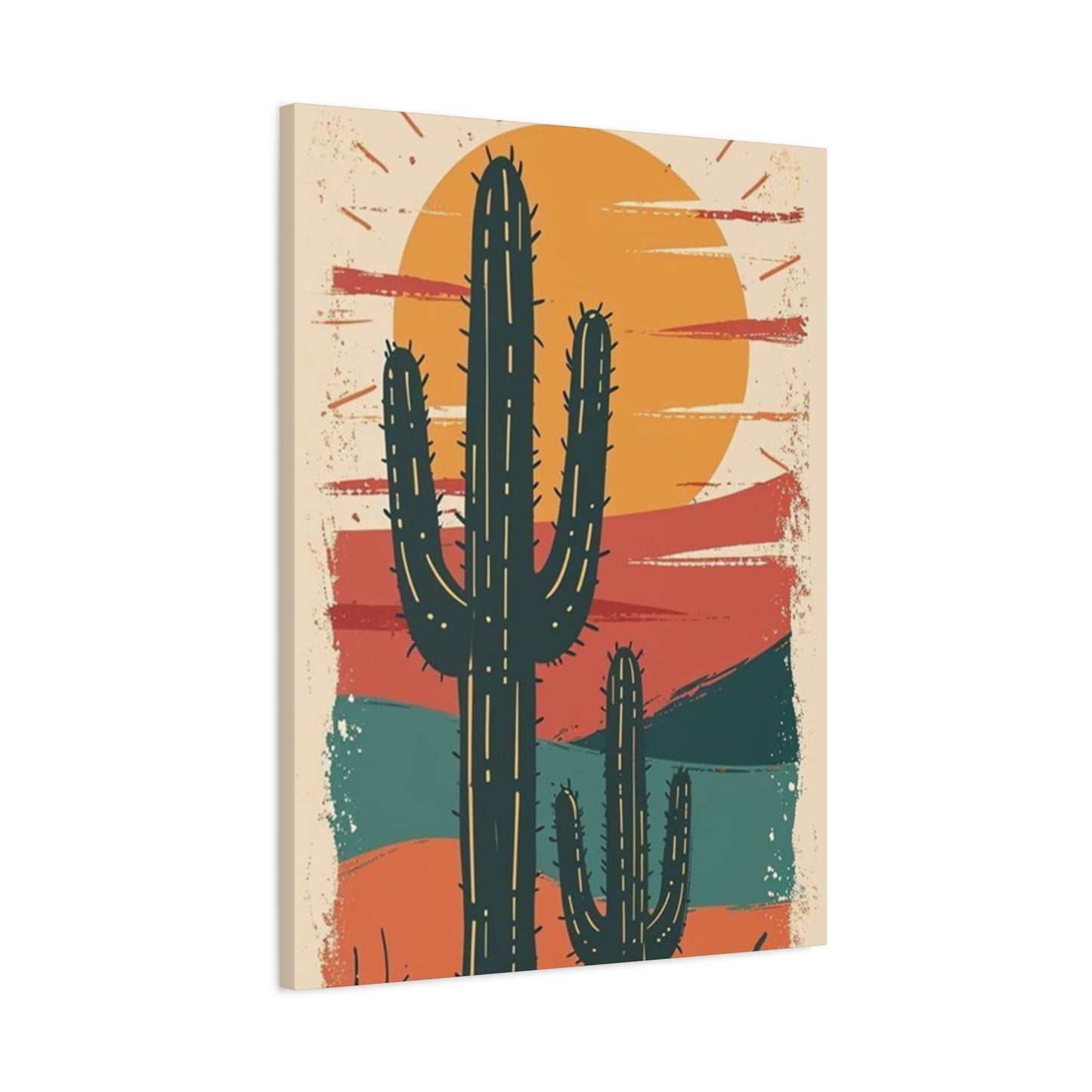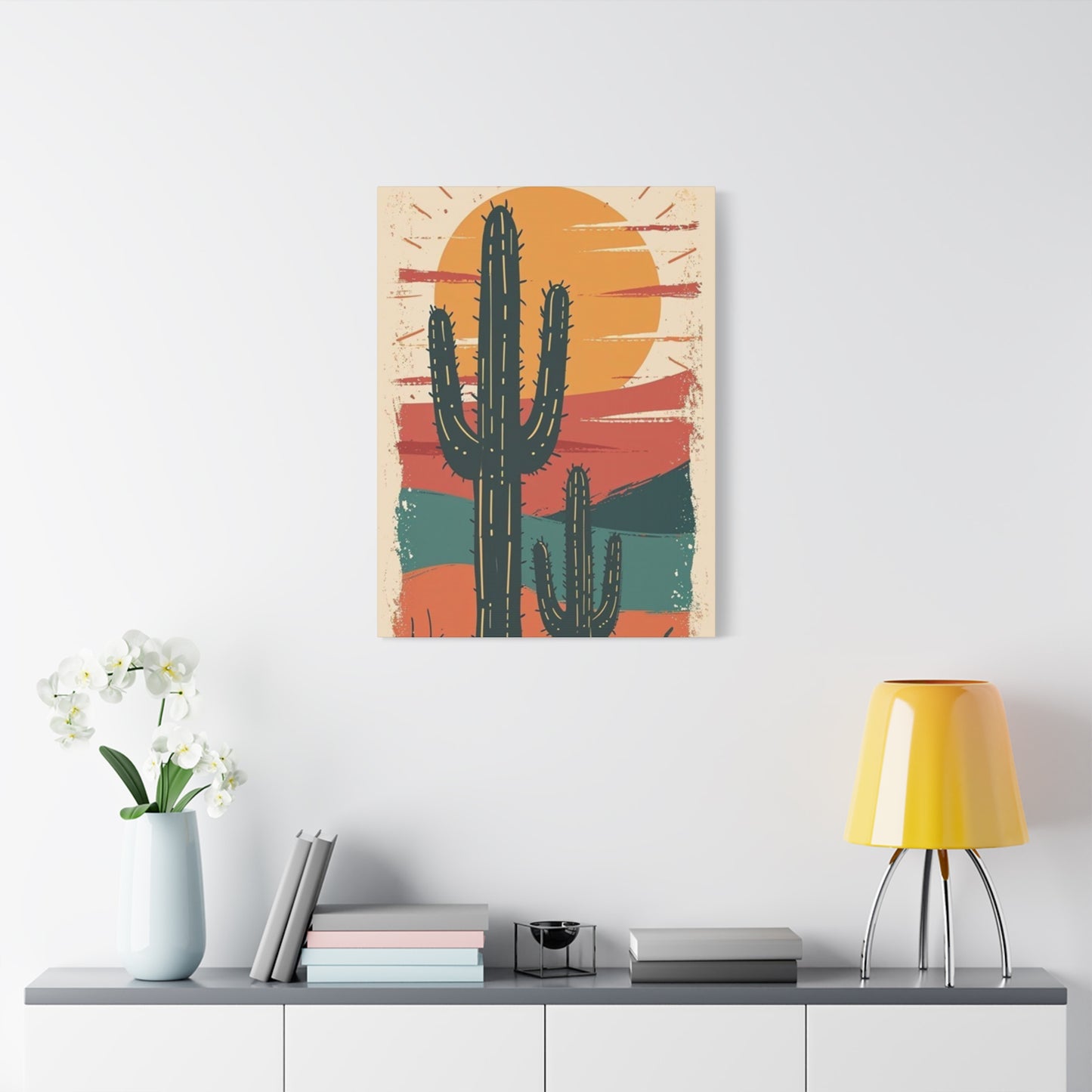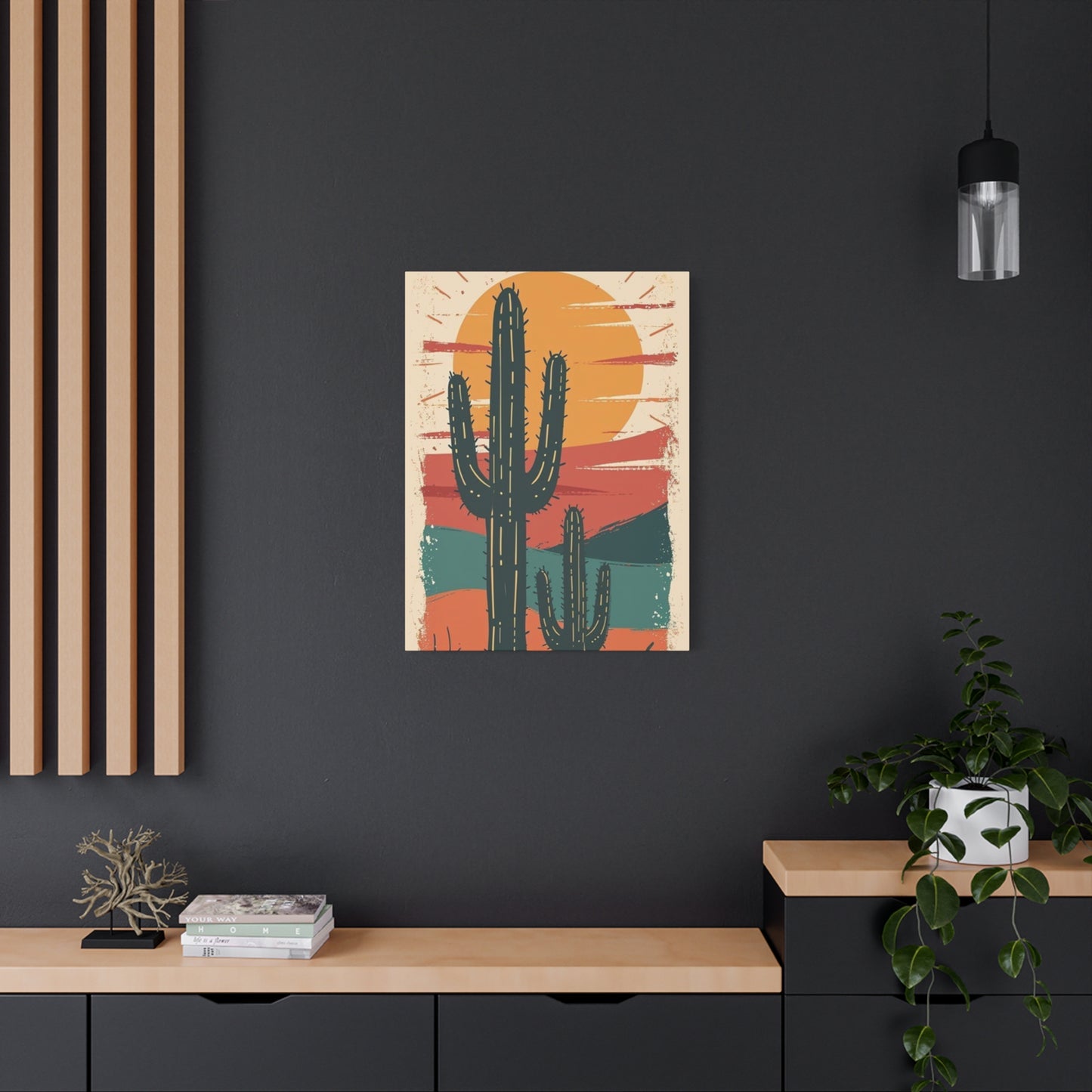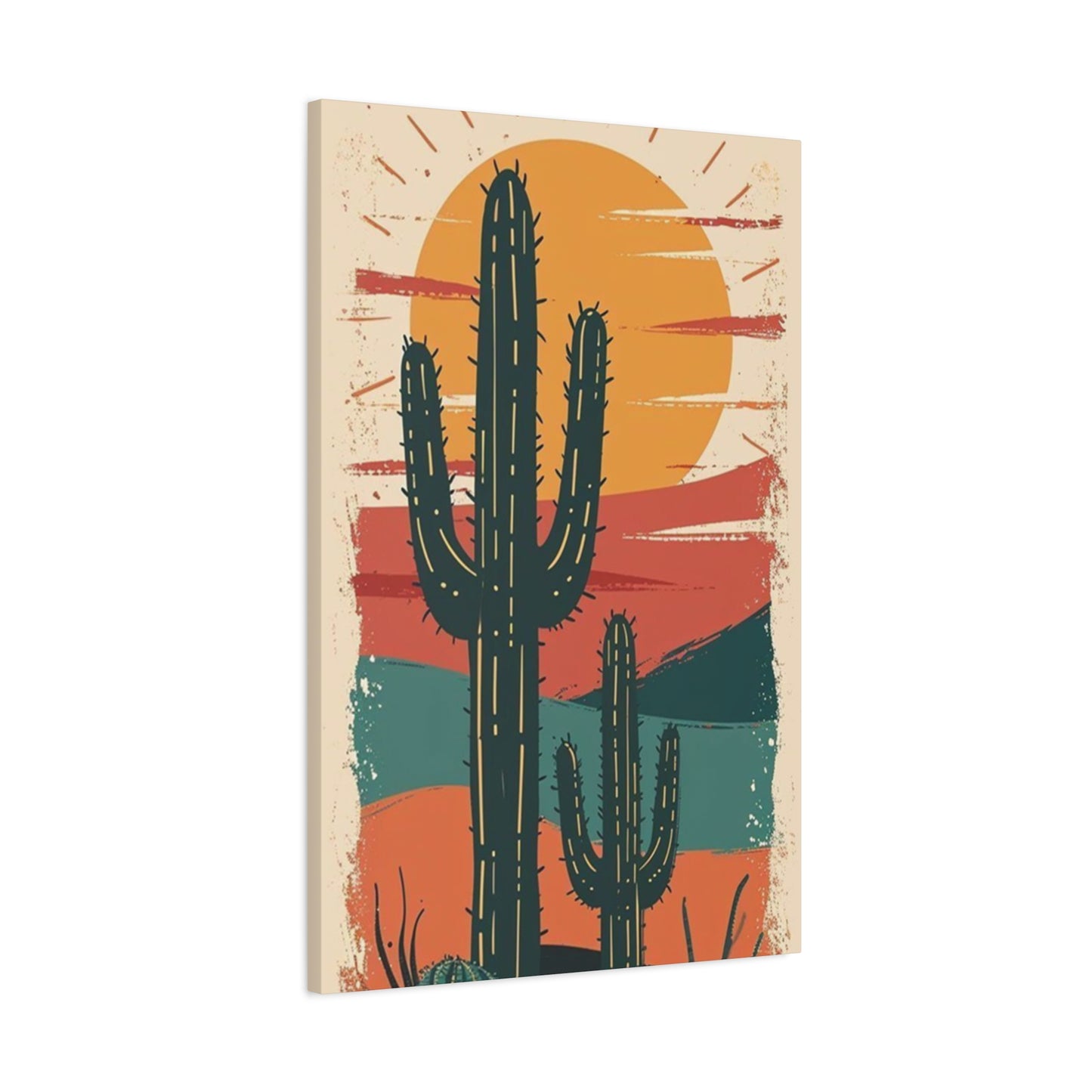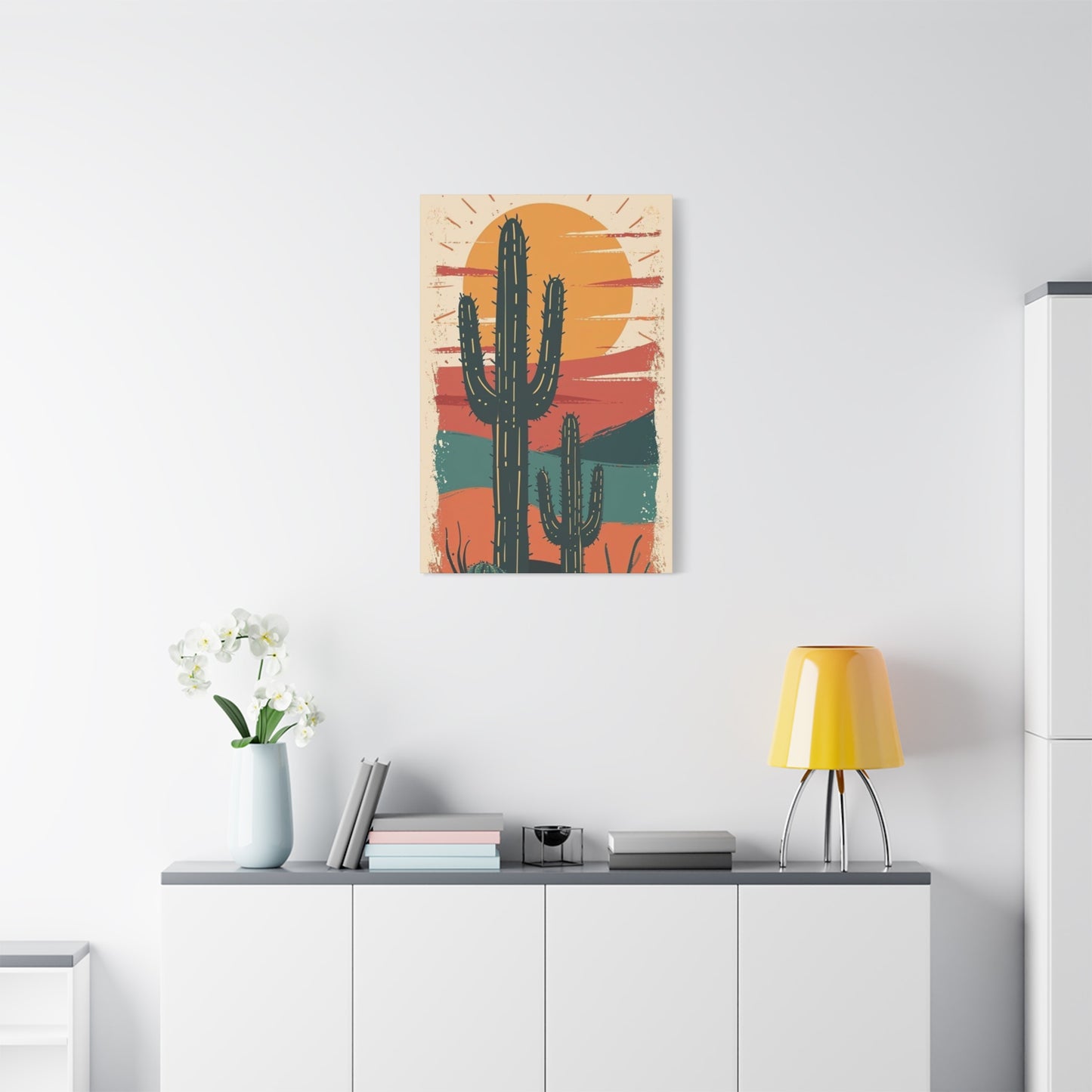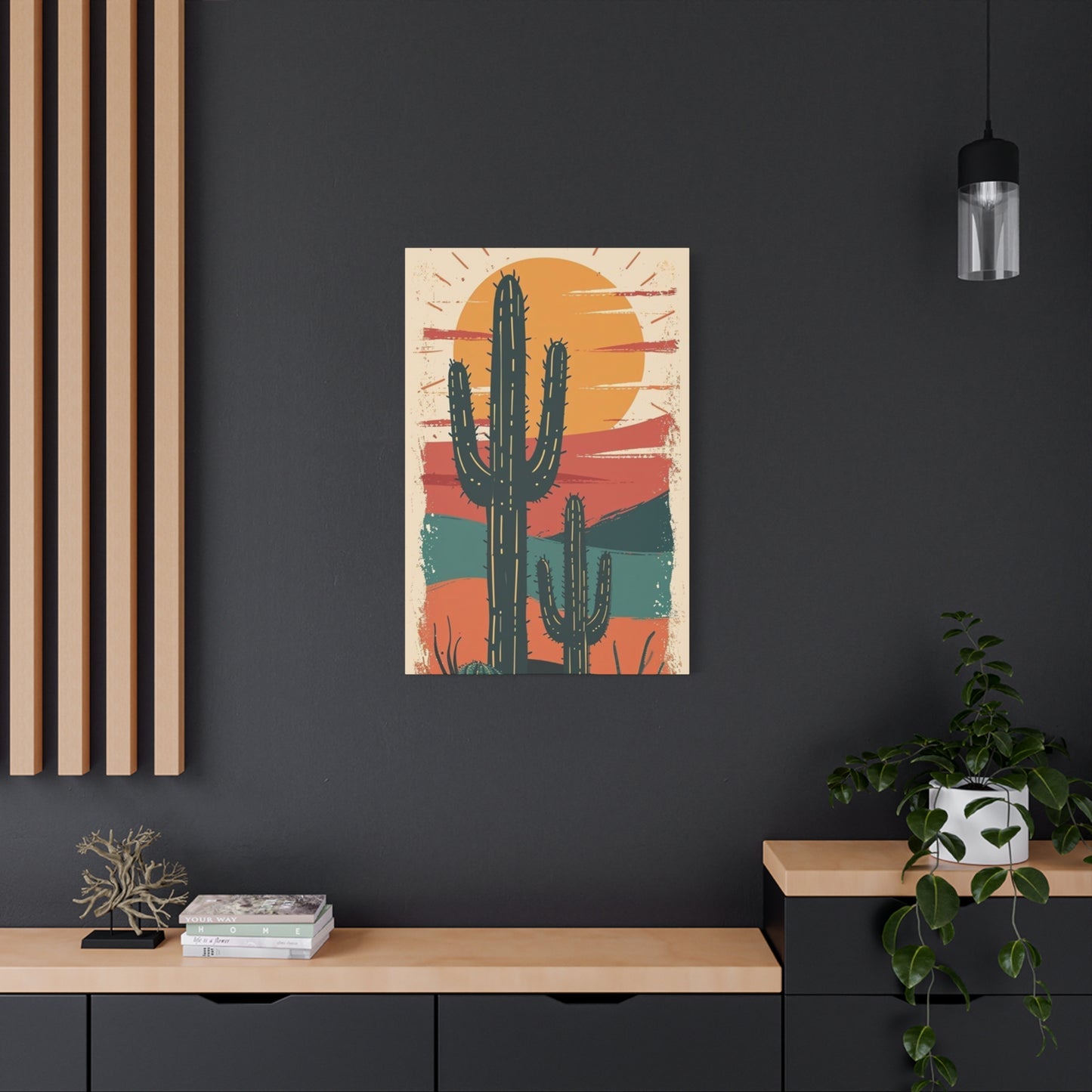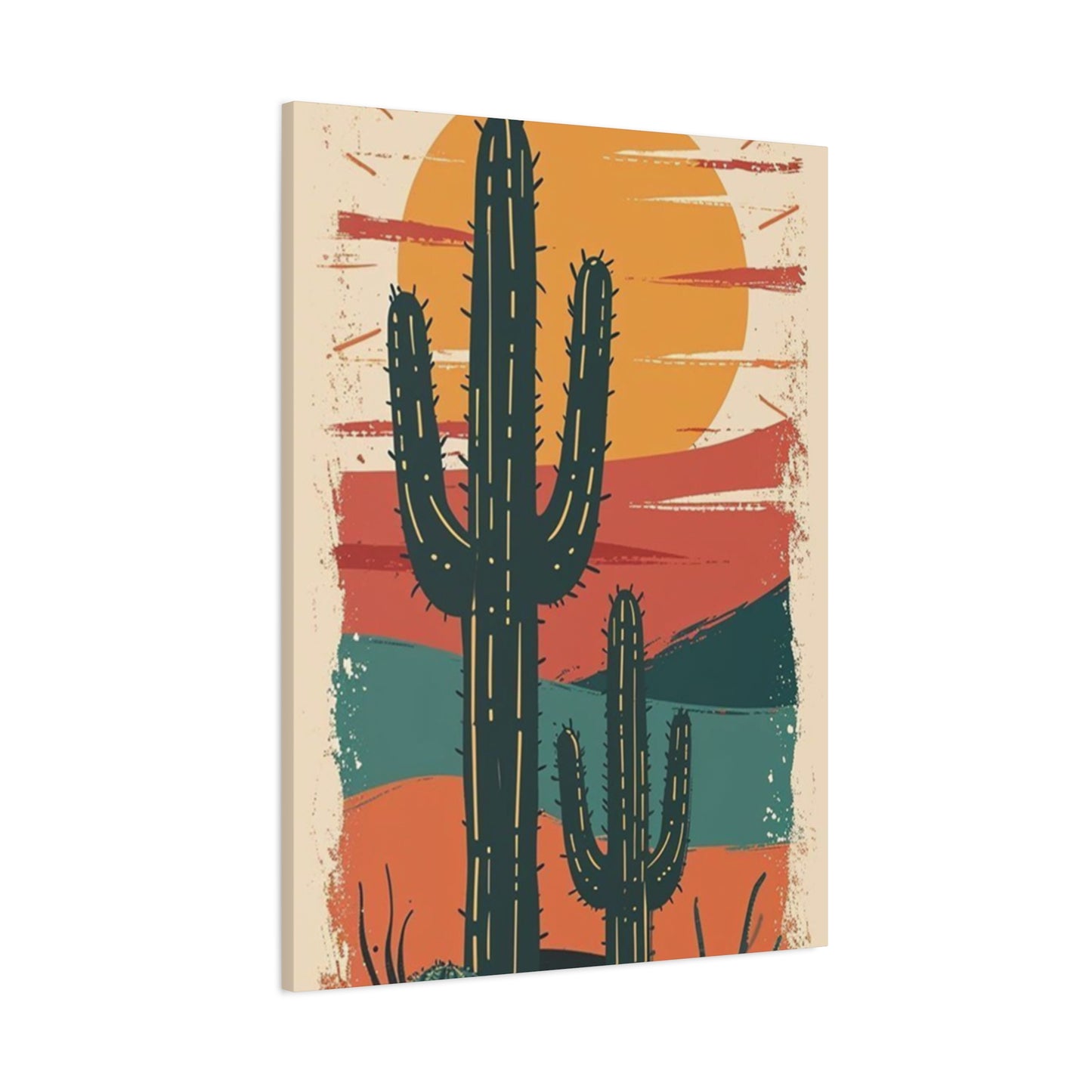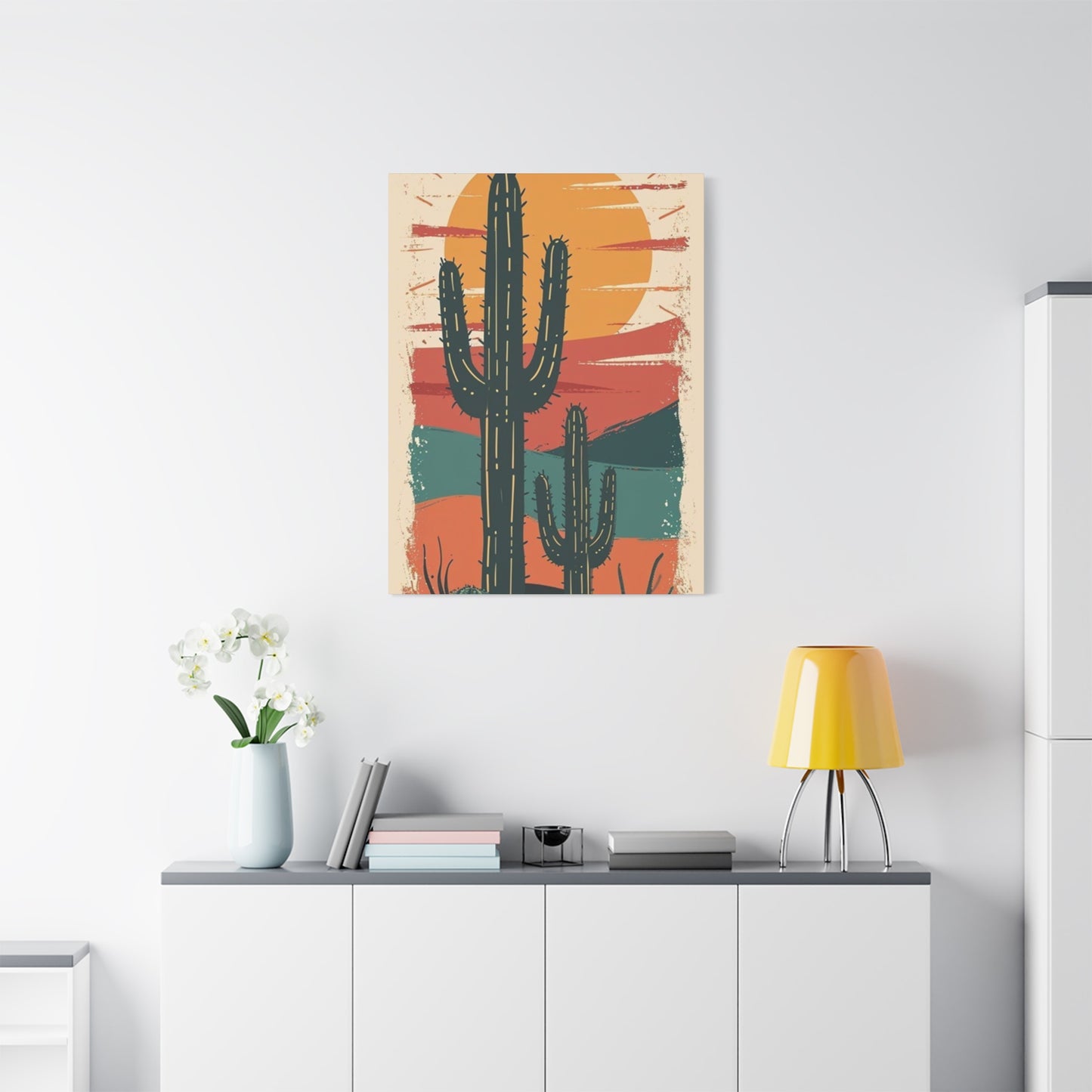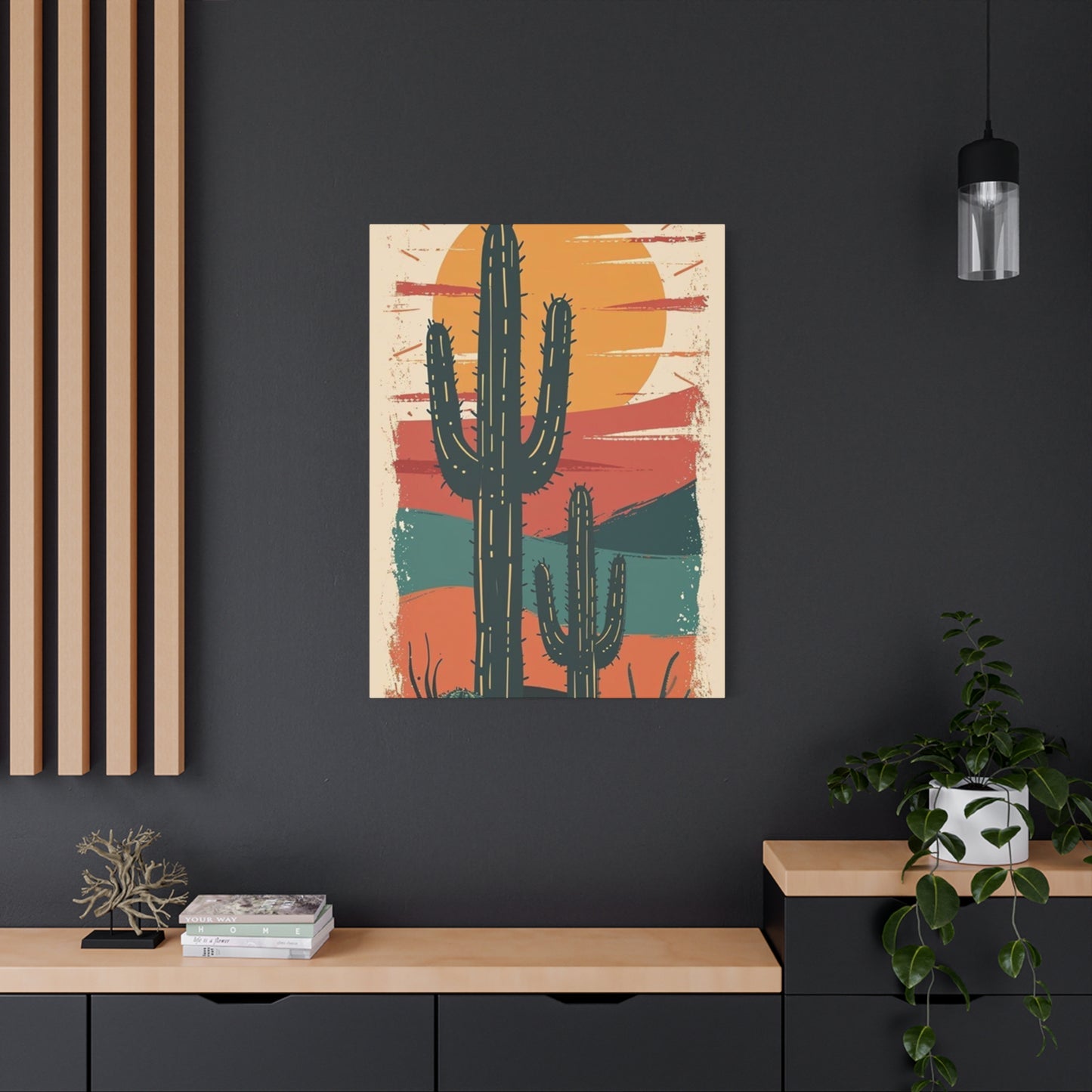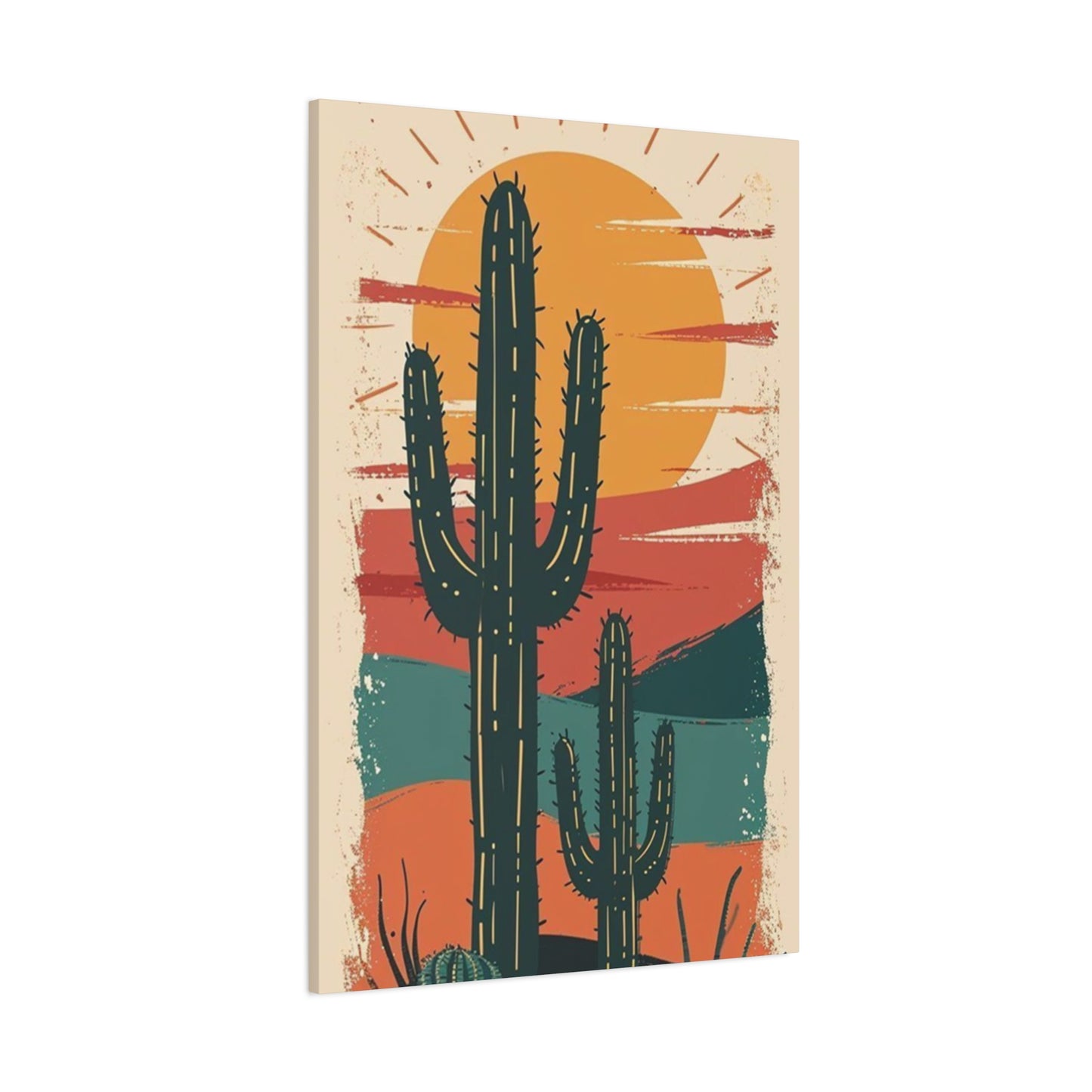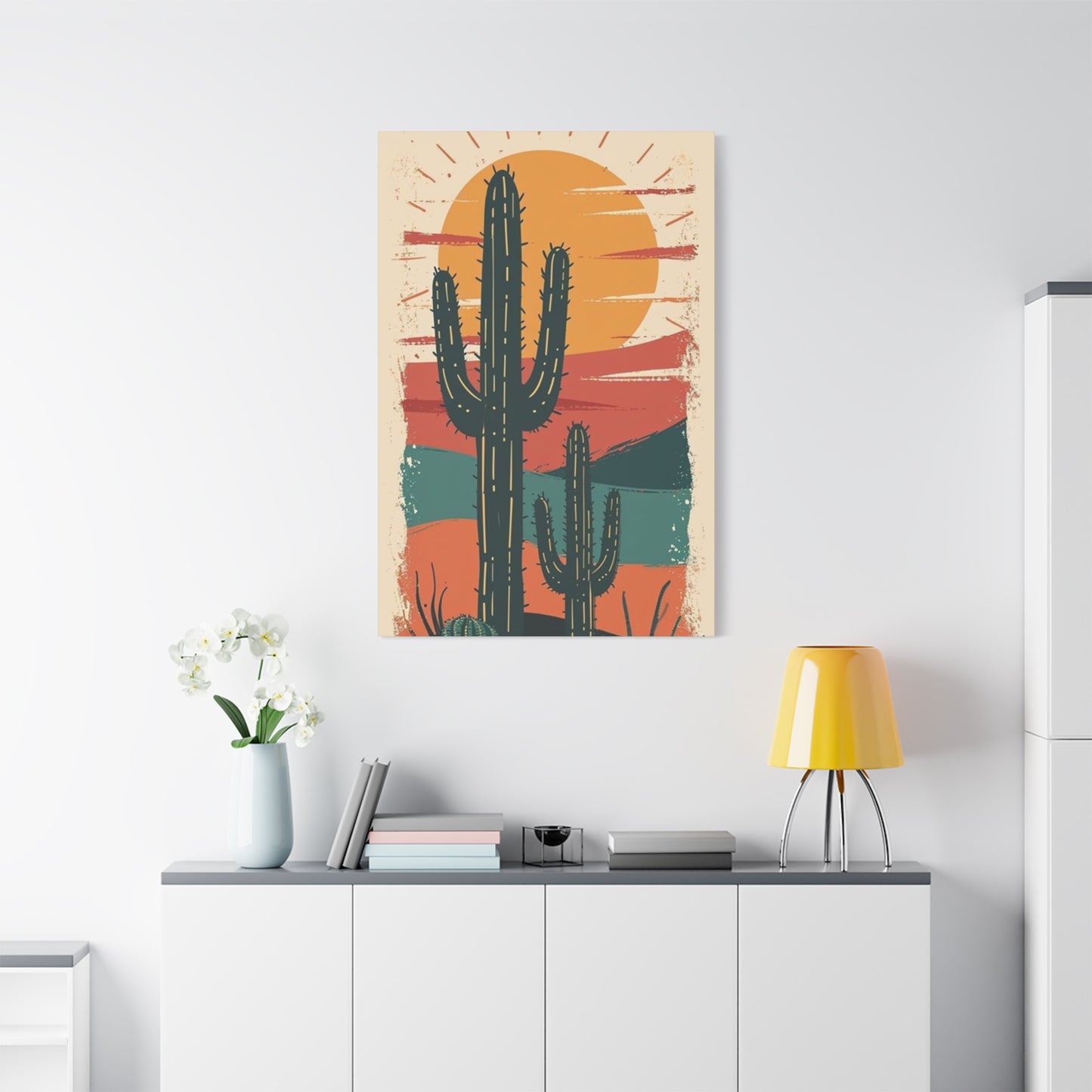Creating Desert Magic: Cacti Wall Art Ideas for Every Home Style
Desert-inspired interior design has captured the hearts of homeowners worldwide, and nothing embodies this aesthetic quite like cactus wall art. These spiky succulents have transcended their natural habitat to become beloved decorative elements that bring warmth, personality, and a touch of the Southwest to any living space. Whether you're drawn to minimalist line drawings, vibrant watercolor masterpieces, or bold photography, cactus-themed wall decor offers endless possibilities for expressing your unique style while creating spaces that feel both contemporary and timeless.
The appeal of cactus wall art lies in its remarkable versatility and symbolic meaning. These resilient plants represent endurance, protection, and the beauty that can flourish in challenging environments. When translated into art, cacti become powerful visual metaphors that resonate with our desire for strength and authenticity in our living spaces. From sleek modern apartments to rustic farmhouse kitchens, cactus wall art adapts seamlessly to various design philosophies while maintaining its distinctive character.
Modern interior designers have embraced cactus motifs for their clean lines, geometric shapes, and natural appeal. The sculptural quality of these plants translates beautifully into artistic interpretations, whether rendered in realistic detail or stylized abstractions. This adaptability makes cactus wall art an excellent investment for homeowners who appreciate decor that can evolve with changing trends while maintaining its fundamental appeal.
The psychological impact of incorporating nature-inspired elements into our homes cannot be overstated. Cactus wall art serves as a gentle reminder of the natural world, bringing a sense of calm and grounding to busy modern lives. Studies have shown that nature-themed artwork can reduce stress, improve mood, and enhance creativity, making cactus decor not just aesthetically pleasing but also beneficial for mental well-being.
As we explore the various ways to incorporate cactus wall art into your home, we'll discover how these desert gems can transform ordinary walls into captivating focal points. From selecting the perfect color combinations to creating stunning gallery walls, this comprehensive exploration will provide you with the knowledge and inspiration needed to bring the magic of the desert into your living spaces.
Optimal Color Combinations for Cactus Wall Decorations
The art of pairing colors with cactus wall decor requires an understanding of both color theory and the natural palette of desert environments. Successful color combinations can elevate your cactus artwork from simple decoration to sophisticated design statements that enhance the overall ambiance of your rooms. The key lies in understanding how different hues interact with the natural greens and earth tones commonly found in cactus art.
Neutral backgrounds serve as the perfect canvas for cactus wall art, allowing the natural beauty of these desert plants to take center stage. Warm whites, creamy beiges, and soft grays create a sophisticated backdrop that complements the organic shapes and colors of cacti. These neutral foundations work particularly well in modern and minimalist interiors, where the goal is to create clean, uncluttered spaces that celebrate the beauty of individual design elements.
Earthy color palettes naturally complement cactus wall art, creating cohesive schemes that feel both grounded and sophisticated. Rich terracotta, warm sand tones, and deep ochre colors echo the natural desert environment where cacti thrive. These combinations work exceptionally well in Southwestern-inspired interiors, bohemian spaces, and rustic settings where warmth and authenticity are priorities.
For those seeking more dramatic impact, jewel tones can create stunning contrasts with cactus wall art. Deep emerald greens, sapphire blues, and amethyst purples provide rich backdrops that make cactus artwork pop with vibrant intensity. This approach works particularly well in eclectic interiors and spaces where bold color choices are encouraged.
Monochromatic schemes using various shades of green can create sophisticated, nature-inspired environments that celebrate the essence of plant life. From sage and eucalyptus to forest green and olive, these combinations create depth and visual interest while maintaining a cohesive, calming atmosphere. This approach is particularly effective in bedrooms and study areas where tranquility is desired.
Pink and coral tones, reminiscent of desert sunsets, create warm and inviting combinations with cactus wall art. These colors work beautifully in feminine spaces, children's rooms, and areas where a touch of playfulness is welcome. The contrast between the soft warmth of pink tones and the structured forms of cacti creates dynamic visual interest.
Black and white combinations offer timeless elegance and work particularly well with photographic cactus art or line drawings. This classic pairing creates sophisticated, gallery-like atmospheres that allow the artistic merit of the pieces to shine. Such combinations are perfect for contemporary spaces, home offices, and areas where a clean, professional aesthetic is desired.
Cool blues and grays can create unexpected but beautiful partnerships with warm-toned cactus art. These combinations evoke the feeling of desert skies and create refreshing, spa-like atmospheres in bathrooms and bedrooms. The contrast between cool wall colors and warm artwork creates visual balance and prevents spaces from feeling too monochromatic.
Watercolor Cactus Artwork for Room Enhancement
Watercolor cactus prints represent one of the most versatile and popular forms of botanical wall art, offering a perfect blend of artistic sophistication and natural beauty. The fluid, organic nature of watercolor techniques naturally complements the soft, rounded forms of many cactus species, creating artwork that feels both contemporary and timeless. These pieces bring a sense of movement and life to static wall spaces while maintaining the serene qualities that make cactus art so appealing.
The appeal of watercolor cactus prints lies in their ability to capture both the delicate beauty and the robust character of these desert plants. Skilled artists use the transparency and flow of watercolor media to create pieces that seem to glow with inner light, mimicking the way natural sunlight filters through cactus pads and spines. This luminous quality makes watercolor cactus prints particularly effective at brightening rooms with limited natural light.
Color variations in watercolor cactus art range from realistic green palettes to imaginative interpretations featuring blues, purples, pinks, and coral tones. These artistic liberties allow homeowners to select pieces that complement their existing color schemes while still maintaining the recognizable forms of beloved cactus species. The soft edges and color bleeding typical of watercolor techniques create gentle, soothing visual experiences that work well in bedrooms, living areas, and spaces designated for relaxation.
Watercolor cactus prints work exceptionally well in series or collections, where multiple pieces can be arranged to create cohesive gallery walls or room-spanning displays. The consistent medium creates visual harmony while allowing for variations in subject matter, color, and composition. This approach is particularly effective in longer hallways, above sofas, or in large dining areas where multiple pieces can be appreciated as both individual artworks and components of a larger design statement.
The organic, hand-painted quality of watercolor cactus prints adds warmth and personality to spaces that might otherwise feel cold or impersonal. In modern apartments with clean lines and minimal furnishings, these pieces provide necessary softness and visual interest without overwhelming the space. The natural imperfections and subtle variations inherent in watercolor techniques create human connection and artistic authenticity that mass-produced prints cannot match.
Framing choices for watercolor cactus prints should complement the soft, organic nature of the medium while providing adequate protection for these delicate artworks. Simple, clean frames in natural wood tones or classic white enhance the artwork without competing for attention. Mat selection should consider the overall color scheme of the room, with neutral tones typically providing the most versatile options.
Size considerations for watercolor cactus prints depend largely on the intended placement and the scale of surrounding furniture and architectural elements. Large statement pieces work well above sofas or beds, while smaller prints can be grouped to create intimate gallery walls or used individually as accent pieces in smaller spaces. The key is to ensure that the scale of the artwork feels proportionate to its surroundings while allowing the delicate details of the watercolor technique to be appreciated.
Professional Framing Techniques for Cactus Artwork
The presentation of cactus wall art through proper framing techniques can dramatically impact both the aesthetic appeal and longevity of your investment. Professional framing not only protects artwork from environmental damage but also enhances its visual impact and helps integrate pieces seamlessly into your interior design scheme. Understanding the various framing options and techniques available allows you to make informed decisions that maximize the beauty and preservation of your cactus art collection.
Frame selection begins with understanding the style and medium of your cactus artwork. Delicate watercolor pieces benefit from frames that provide substantial protection while maintaining visual lightness, typically achieved through the use of quality matting and UV-protective glass. Photography prints may require different considerations, with options for museum-quality mounting and archival materials that prevent deterioration over time.
Material choices for frames significantly impact both the appearance and durability of your framed cactus art. Natural wood frames complement the organic nature of cactus subjects while providing warmth and texture that enhances desert-themed interiors. Metal frames offer clean, contemporary lines that work well with modern and industrial design schemes. The choice between materials should consider both the artwork style and the existing decor elements in the intended space.
Matting serves multiple purposes in professional framing, providing visual breathing space around the artwork while offering protection from direct contact with glass or acrylic glazing. Mat colors should be selected to enhance the artwork without competing for attention. Neutral tones like cream, white, and light gray work well with most cactus art, while colored mats can be used to echo specific hues within the artwork or complement room color schemes.
Glass selection represents a crucial technical decision that affects both the appearance and preservation of framed cactus art. Regular glass provides basic protection but may create unwanted reflections that interfere with artwork viewing. Museum-quality glass offers superior UV protection and reduced reflections, making it ideal for valuable or irreplaceable pieces. Acrylic alternatives provide lightweight options that are particularly suitable for large pieces or spaces where safety is a concern.
Mounting techniques vary depending on the medium and value of the artwork. Conservation mounting uses reversible techniques and acid-free materials to ensure long-term preservation, making it essential for original artwork or limited edition prints. Standard mounting provides adequate protection for reproduction prints while maintaining cost-effectiveness for budget-conscious projects.
Size relationships between frames and artwork require careful consideration to achieve proper visual balance. The frame should provide adequate support and protection without overwhelming the artwork or appearing disproportionately large or small within the intended space. Standard proportional guidelines suggest frame widths that complement rather than compete with the artwork dimensions.
Custom framing options allow for personalized solutions that address specific artwork requirements and design preferences. Custom matting can incorporate multiple mat layers, decorative cuts, or colored accents that enhance the presentation. Custom frame profiles can be selected to match existing architectural elements or furniture details, creating cohesive design relationships throughout the space.
Incorporating Cactus Art into Bohemian Design Schemes
The bohemian design aesthetic, with its emphasis on natural materials, eclectic collections, and globally inspired elements, provides an ideal backdrop for cactus wall art. This design philosophy celebrates individuality, creativity, and the mixing of different cultural influences, making it naturally compatible with the diverse interpretations and styles available in cactus-themed artwork. The key to successfully integrating cactus art into bohemian spaces lies in understanding the underlying principles of this decorative approach and selecting pieces that enhance rather than conflict with existing elements.
Layered textures form the foundation of successful bohemian design, and cactus wall art can contribute to this visual complexity through careful selection and placement. Woven wall hangings, macrame installations, and textile art can be interspersed with cactus prints to create rich, tactile environments that engage multiple senses. The contrast between the structured forms of cacti and the flowing lines of textile arts creates dynamic visual interest that embodies the eclectic spirit of bohemian design.
Color palettes in bohemian spaces typically embrace rich, saturated hues drawn from global traditions and natural environments. Cactus wall art in jewel tones, sunset colors, and earthy palettes fits seamlessly into these schemes while adding the grounding influence of plant imagery. The key is to select pieces that complement rather than compete with existing colorful elements, creating harmony within diversity.
Mixed media approaches work particularly well in bohemian settings, where the combination of different artistic techniques and materials adds to the overall sense of collected authenticity. Cactus artwork in various media can be combined with pottery, sculptures, and found objects to create curated displays that feel personal and meaningful. This approach allows for the gradual building of collections over time, with new pieces adding to rather than replacing existing elements.
Global influences in bohemian design can be enhanced through the selection of cactus art that reflects different cultural interpretations of these plants. Mexican folk art traditions, Southwestern Native American designs, and modern interpretations from various artistic cultures can coexist harmoniously within bohemian spaces. This multicultural approach celebrates the universal appeal of cactus imagery while honoring diverse artistic traditions.
Natural materials play a crucial role in bohemian design, and the framing and presentation of cactus wall art should reflect this preference. Wooden frames in natural finishes, rope or leather hanging systems, and displays that incorporate live plants create cohesive environments that celebrate organic beauty. The goal is to make the artwork feel like a natural extension of the overall design philosophy rather than an imposed decorative element.
Arrangement strategies in bohemian spaces often favor asymmetrical, organic groupings over formal gallery-style presentations. Cactus wall art can be clustered with mirrors, small shelves, and other decorative objects to create vignettes that invite closer inspection and discovery. This approach encourages personal engagement with the artwork and supports the bohemian emphasis on individual expression and creativity.
Charming Cartoon Cactus Designs for Children's Spaces
Children's rooms present unique opportunities for incorporating cactus wall art in ways that are both educational and entertaining. Cartoon-style cactus designs offer the perfect solution for introducing young minds to the beauty of desert plants while creating cheerful, engaging environments that spark imagination and wonder. These playful interpretations of cacti can help children develop an appreciation for nature while adding personality and charm to their personal spaces.
Character development in cartoon cactus art often involves anthropomorphizing these plants with faces, expressions, and personalities that children find relatable and endearing. Smiling cacti with rosy cheeks, sleepy barrel cacti with droopy eyes, or dancing prickly pears create emotional connections that help children form positive associations with both art and nature. These characterizations can also serve as starting points for storytelling and imaginative play.
Educational opportunities abound when incorporating cactus wall art into children's spaces. Artwork can be paired with simple facts about desert environments, water conservation, and plant adaptation, turning bedroom walls into interactive learning experiences. This approach supports STEM education while making learning fun and visually engaging. Parents and teachers can use these displays as conversation starters about geography, biology, and environmental stewardship.
Color schemes for children's cactus art should be bright, cheerful, and age-appropriate while still maintaining some connection to natural desert palettes. Soft pastels, rainbow variations, and imaginative color combinations can make cacti more appealing to young viewers while encouraging creativity and color recognition. The key is finding the right balance between realistic representation and playful interpretation.
Safety considerations are paramount when selecting and hanging artwork in children's spaces. Frames should be securely mounted and positioned out of reach of small hands, while materials should be non-toxic and durable enough to withstand the energy of active children. Acrylic glazing instead of glass provides protection while eliminating safety concerns about breakage.
Interactive elements can enhance the appeal of cactus wall art in children's rooms. Artwork with textured surfaces, removable elements, or components that invite touch and exploration create multi-sensory experiences that support child development. Growth charts featuring cactus themes, removable wall decals, and artwork that changes with different lighting conditions add functionality to decorative elements.
Age-appropriate sizing ensures that children can properly appreciate and engage with their artwork. Pieces should be hung at appropriate heights for the child's age and eye level, creating personal connections that foster ownership and pride in their space. This consideration helps children develop aesthetic appreciation and personal taste from an early age.
Monochromatic Cactus Photography for Contemporary Interiors
Black and white cactus photography represents a sophisticated approach to botanical wall art that emphasizes form, texture, and composition over color. This monochromatic treatment transforms familiar desert subjects into striking artistic statements that complement contemporary interior design while offering timeless appeal. The absence of color draws attention to the sculptural qualities of cacti, revealing details and patterns that might otherwise be overlooked in full-color presentations.
Architectural qualities of cacti become particularly pronounced in black and white photography, where the interplay of light and shadow emphasizes the geometric patterns and structural elements of these plants. The strong vertical lines of columnar cacti, the circular patterns of barrel cacti, and the angular relationships between pads and spines create compelling compositions that resonate with modern design principles. These formal qualities make monochromatic cactus photography an excellent choice for spaces with clean lines and minimal decorative elements.
Textural details shine in black and white cactus photography, where the absence of color forces viewers to focus on surface qualities and tactile characteristics. The fine detail of spine patterns, the waxy smoothness of succulent surfaces, and the intricate relationships between different plant parts become the primary visual elements. This emphasis on texture creates artwork that invites closer inspection and rewards careful observation.
Contrast manipulation in black and white photography allows artists to create dramatic effects that might not be possible in color imagery. High contrast treatments can create bold, graphic statements suitable for modern and industrial interiors, while softer, more nuanced approaches work well in spaces where subtlety and sophistication are priorities. The flexibility of monochromatic processing allows for customization based on specific design requirements.
Gallery-quality presentation becomes particularly important with black and white cactus photography, where the absence of color places greater emphasis on print quality and framing choices. Museum-quality papers, archival processing, and professional mounting techniques ensure that the subtle tonal variations and fine details are preserved and properly displayed. Investment in quality presentation pays dividends in both aesthetic impact and longevity.
Series and collections of black and white cactus photography work exceptionally well together, creating cohesive displays that celebrate the diversity of desert plant forms while maintaining visual harmony. Groupings can explore variations in species, compositions, or lighting conditions while maintaining the unifying element of monochromatic treatment. This approach is particularly effective for creating statement walls in living rooms, offices, or hallways.
Integration with contemporary design elements requires careful consideration of scale, placement, and surrounding decor. Black and white cactus photography pairs beautifully with modern furniture, minimalist color schemes, and architectural elements that emphasize form over ornamentation. The key is ensuring that the artwork enhances rather than competes with existing design elements while providing necessary visual interest and personality.
Budget-Conscious Cactus Wall Art Solutions
Creating beautiful spaces with cactus wall art doesn't require expensive original pieces or custom framing solutions. Budget-conscious approaches to decorating with desert-themed artwork can achieve stunning results through creative sourcing, DIY techniques, and strategic selection of affordable options. The key lies in understanding where to find quality pieces at reasonable prices and how to present them effectively without significant investment.
Print-on-demand services have revolutionized access to high-quality artwork at affordable prices. Many online platforms offer extensive collections of cactus-themed designs that can be printed on various materials and sizes to suit different needs and budgets. These services often provide options for different paper types, canvas printing, and even metal prints, allowing for customization without custom pricing.
Digital downloads represent the most budget-friendly option for accessing professional-quality cactus artwork. Many artists and designers sell downloadable files that purchasers can print locally, providing maximum flexibility in sizing and printing options while minimizing costs. This approach also allows for reprinting if damage occurs or if different sizes are needed for room changes.
DIY framing techniques can significantly reduce the cost of presenting artwork professionally. Simple frame styles from discount retailers can be enhanced with quality matting, proper mounting, and attention to detail. Learning basic framing skills allows for customization and repair while building practical knowledge that applies to future decorating projects.
Thrift stores and secondhand shops often yield surprising treasures for the patient searcher. Existing framed pieces can be updated with new artwork, while unique frames can house newly acquired prints. This approach supports sustainable decorating practices while providing opportunities for truly unique finds that add character to spaces.
Printable wall art has gained popularity among budget-conscious decorators who appreciate the convenience and affordability of instant downloads. Many designers create collections specifically for home printing, with detailed instructions for optimal results. This approach allows for seasonal updates and easy replacement if tastes change.
Seasonal sales and clearance events provide opportunities for acquiring higher-quality pieces at reduced prices. End-of-season sales, gallery closings, and promotional events can yield significant savings for patient shoppers. Building relationships with local frame shops and art suppliers can provide advance notice of upcoming sales and special offers.
Creative presentation techniques can enhance budget artwork to appear more expensive than its actual cost. Quality matting, proper lighting, and thoughtful groupings can elevate inexpensive prints to look like professional installations. The key is understanding basic design principles and applying them consistently throughout the space.
Durable Metal Cactus Art for Versatile Placement
Metal cactus wall art offers unique advantages for both indoor and outdoor applications, combining the appeal of desert themes with the durability and weather resistance of metal construction. These three-dimensional pieces add sculptural interest to walls while providing practical benefits that traditional paper or canvas artwork cannot match. The versatility of metal art makes it suitable for challenging environments where other art forms might deteriorate or require frequent replacement.
Weather resistance represents the primary advantage of metal cactus art for outdoor applications. Quality pieces constructed from aluminum, steel, or copper can withstand rain, sun, wind, and temperature fluctuations that would destroy other art forms. This durability makes metal cactus art ideal for patios, gardens, pool areas, and covered outdoor spaces where desert themes enhance the natural environment.
Indoor applications for metal cactus art benefit from the sculptural qualities and light-reflecting properties of metal surfaces. These pieces create dynamic visual interest as lighting conditions change throughout the day, with surfaces catching and reflecting both natural and artificial light. This quality makes metal art particularly effective in spaces with good lighting or where artwork serves as a focal point.
Finish options for metal cactus art range from natural patinas that develop over time to painted surfaces in various colors. Powder-coated finishes provide color options while maintaining weather resistance, allowing for customization to match specific design schemes. Natural metal finishes offer timeless appeal that develops character through weathering and oxidation processes.
Size and scale considerations for metal cactus art differ from other wall art forms due to the three-dimensional nature and visual weight of metal pieces. Large statement pieces can anchor outdoor spaces or serve as focal points in rooms with high ceilings, while smaller pieces work well in groupings or as accents. The substantial nature of metal art requires secure mounting and appropriate wall support.
Mounting systems for metal cactus art must account for the weight and wind resistance of these pieces, particularly for outdoor installations. Professional installation may be necessary for large or heavy pieces, while smaller items can often be mounted using heavy-duty hardware and proper anchoring techniques. Safety considerations are paramount, especially in areas where high winds or seismic activity are concerns.
Maintenance requirements for metal cactus art are generally minimal but depend on the finish and environmental conditions. Regular cleaning and occasional touch-ups may be necessary to maintain appearance, while natural finishes may require periodic treatment to control oxidation. Understanding the specific maintenance needs of different metal types and finishes helps ensure long-term enjoyment of these investments.
Creating Stunning Gallery Walls with Cactus Prints
Gallery walls featuring cactus prints offer exciting opportunities to create personalized art displays that reflect individual taste while celebrating the diversity and beauty of desert plant life. The key to successful gallery wall creation lies in understanding principles of composition, balance, and visual flow while selecting pieces that work harmoniously together despite potential differences in size, style, or medium. This approach allows for the creation of dynamic, engaging displays that serve as focal points in any room.
Planning and preparation form the foundation of successful gallery wall installation. Creating paper templates of each piece and experimenting with arrangements on the floor before mounting allows for adjustments and refinements without putting holes in walls. This process helps identify the optimal layout while considering factors like visual weight, color distribution, and spacing between pieces.
Unifying elements help create cohesion within gallery walls that might otherwise appear chaotic or disorganized. Common themes might include color palettes, frame styles, matting choices, or subject matter variations within the cactus genre. These connecting elements allow for diversity while maintaining visual harmony that pleases the eye and creates satisfying viewing experiences.
Spacing considerations significantly impact the success of gallery wall installations. Consistent spacing between pieces creates orderly, museum-like presentations, while varied spacing can create more dynamic, organic arrangements. The key is maintaining visual balance while avoiding overcrowding that diminishes the impact of individual pieces. Standard guidelines suggest spacing of 2-3 inches between frames, adjusted based on the overall scale of the installation.
Anchor pieces provide focal points around which other elements can be arranged. These are typically the largest, most visually striking, or most important pieces in the collection. Positioning anchor pieces first and building outward helps create balanced compositions that guide the viewer's eye through the entire display. Multiple anchor pieces can create rhythm and movement within larger installations.
Size variation adds visual interest and helps avoid monotony in gallery wall displays. Mixing large statement pieces with smaller accent works creates hierarchy and depth while accommodating pieces acquired over time or with different intended purposes. The key is ensuring that size variations feel intentional rather than random, with careful attention to how different scales interact within the overall composition.
Color distribution throughout gallery walls requires careful attention to avoid clustering similar hues in single areas while leaving other sections feeling empty or unbalanced. Distributing colors evenly or creating intentional color flows helps maintain visual interest and prevents any single area from dominating the overall display. This consideration is particularly important when working with diverse cactus art that might include various color palettes and intensities.
Seasonal Versatility of Cactus Wall Art
The enduring appeal of cactus wall art lies partially in its remarkable ability to complement and enhance seasonal decorating schemes throughout the year. Unlike artwork tied to specific seasons or holidays, cactus-themed pieces provide consistent beauty while adapting to changing seasonal elements and color palettes. This versatility makes cactus art an excellent investment for homeowners who enjoy updating their decor to reflect seasonal changes while maintaining core design elements.
Spring decorating benefits from the renewal and growth themes associated with plant imagery, making cactus wall art particularly appropriate during months of emerging life and fresh beginnings. The green hues common in cactus art complement spring color palettes of soft yellows, light pinks, and fresh whites. During this season, cactus art can be paired with live plants, fresh flowers, and light textiles to create spaces that celebrate new growth and vitality.
Summer months allow cactus wall art to truly shine as desert themes become particularly relevant during hot weather. The heat tolerance and water conservation represented by cacti resonate with summer's challenges while providing visual cooling through association with survival and adaptation. Bright, vibrant cactus art pairs beautifully with summer color schemes featuring coral, turquoise, and sunny yellow, creating spaces that feel fresh despite external heat.
Autumn decorating can incorporate cactus wall art through careful selection of pieces featuring warm, earthy tones that complement fall color palettes. Rich oranges, deep reds, and golden yellows in autumn-themed cactus art create cozy, welcoming atmospheres that bridge the gap between summer's brightness and winter's contemplative moods. The sculptural qualities of cacti also complement autumn's emphasis on texture and natural materials.
Winter presents unique opportunities for cactus wall art to provide warmth and life during months when outdoor plants are dormant. The evergreen nature of most cacti makes them symbols of persistence and endurance during challenging seasons. Cactus art in warm tones can counteract winter's cold palette, while pieces emphasizing the architectural beauty of these plants complement winter's clean, minimal aesthetic.
Holiday decorating can incorporate cactus wall art as a unique alternative to traditional seasonal themes. Desert-themed holiday decorations, Southwestern Christmas traditions, and non-traditional holiday color schemes can all benefit from the inclusion of cactus art. This approach is particularly appealing for those seeking to create distinctive holiday atmospheres that reflect personal style rather than conventional expectations.
Year-round placement strategies for cactus wall art should consider how pieces will interact with changing seasonal elements like textiles, lighting, and temporary decorations. Selecting locations where artwork can serve as consistent anchors while allowing for seasonal updates ensures maximum enjoyment and versatility. This approach supports sustainable decorating practices while providing ongoing inspiration throughout the year.
Distinguishing Between Succulent and Cactus Artwork Choices
While often grouped together under the broader category of desert plant art, succulents and cacti represent distinct plant families with different aesthetic qualities and decorative applications. Understanding these differences helps homeowners make informed choices about which type of plant imagery best suits their decorating needs, design preferences, and the specific atmosphere they wish to create in different spaces. This knowledge also helps in creating more botanically accurate and visually coherent design schemes.
Botanical distinctions between succulents and cacti influence their artistic representation and decorative impact. Cacti are technically a subset of succulents, characterized by their distinctive areoles from which spines emerge. This unique feature gives cacti their characteristic spiky appearance and creates strong vertical and radial line patterns that translate beautifully into graphic and architectural artistic interpretations. True cacti imagery tends to emphasize structure, protection, and geometric forms.
Succulent varieties beyond cacti offer softer, more diverse forms that translate into different artistic expressions. Plants like echeveria, jade, and aloe provide rosette patterns, smooth surfaces, and curved lines that create gentler, more organic artistic compositions. These characteristics make non-cactus succulent art particularly suitable for spaces where softness and femininity are desired, or where the spiky associations of cacti might feel too aggressive.
Visual impact differences between cactus and succulent artwork affect room atmosphere and design integration. Cactus art tends to create stronger, more dramatic statements due to the bold forms and defensive characteristics of these plants. Succulent art often provides subtler, more soothing visual experiences that work well in spaces designated for relaxation and contemplation. Understanding these impacts helps in selecting appropriate pieces for different rooms and purposes.
Color palette variations between cactus and succulent art reflect the natural diversity within these plant families. Cactus art typically features various shades of green with occasional flowering elements in bright colors, while succulent art can encompass a broader spectrum including blue-greens, purples, reds, and silver tones. This color diversity in succulent art provides more options for matching existing color schemes and creating specific moods.
Style compatibility considerations help determine which plant type works best with different interior design approaches. Cactus art aligns well with Southwestern, modern, and industrial design styles where strong forms and bold statements are appreciated. Succulent art complements contemporary, Scandinavian, and feminine design schemes where gentleness and organic beauty are priorities. Some eclectic and bohemian spaces can successfully incorporate both types for maximum visual interest.
Mixed arrangements combining both cactus and succulent artwork can create rich, diverse displays that celebrate the full spectrum of desert plant beauty. This approach requires careful attention to visual balance and thematic consistency while allowing for the exploration of different forms, colors, and artistic interpretations within a single space. Success depends on finding unifying elements that tie diverse pieces together cohesively.
Southwestern-Inspired Cactus Decoration Concepts
Southwestern design traditions provide rich inspiration for incorporating cactus wall art into homes seeking to capture the authentic spirit and cultural heritage of America's desert regions. This design approach goes beyond simple decorative choices to embrace the history, craftsmanship, and natural beauty that define Southwestern style. Understanding these cultural connections helps create spaces that honor regional traditions while meeting contemporary living needs and aesthetic preferences.
Native American artistic traditions offer profound inspiration for Southwestern cactus wall art, with generations of indigenous artists creating representations of desert plants that carry spiritual and cultural significance. Contemporary pieces that respectfully reference these traditions can add depth and meaning to home decor while supporting ongoing artistic practices. The key is selecting artwork that honors rather than appropriates these cultural elements, ideally purchasing from Native artists or culturally connected sources.
Mexican folk art influences bring vibrant colors, playful interpretations, and celebratory approaches to cactus wall art. Traditional techniques like papel picado, ceramic painting, and textile arts translate beautifully into wall decorations featuring cacti and other desert plants. These influences encourage the use of bright colors, festive patterns, and handcrafted elements that create warm, welcoming environments filled with cultural richness and artistic tradition.
Adobe and earth-tone color palettes form the foundation of authentic Southwestern design and provide perfect backdrops for cactus wall art. Warm terracotta, sand beige, sage green, and sunset orange create environments that feel naturally connected to desert landscapes while providing sophisticated color schemes suitable for contemporary living. These earth-based palettes help cactus art feel integrated rather than imposed within living spaces.
Handcrafted and artisanal elements align with Southwestern design principles that value individual craftsmanship over mass production. Seeking out handmade cactus art, whether created by local artists or traditional craftspeople, adds authenticity and personal connection to home decor. These pieces often feature unique characteristics and imperfections that mass-produced items cannot replicate, creating spaces with genuine personality and cultural connection.
Natural material integration supports Southwestern design approaches that celebrate the beauty of regional materials and traditional building techniques. Wooden frames made from local woods, metal elements featuring traditional metalwork techniques, and display methods that incorporate stone, leather, or other regional materials help create cohesive environments that feel authentically connected to place and tradition.
Architectural harmony becomes important when incorporating Southwestern cactus art into homes that may not have regional architectural features. Selecting artwork that complements existing architectural elements while gently introducing Southwestern influences helps create cohesive design schemes. This might involve choosing pieces that echo the proportions of existing windows, doorways, or built-in features while adding regional character and visual interest.
Fresh Bathroom Cactus Art
Bathroom spaces present unique opportunities and challenges for incorporating cactus wall art, requiring careful consideration of humidity, lighting, and spatial constraints while capitalizing on the fresh, clean associations these plants provide. The trend toward spa-like bathroom environments has made plant imagery increasingly popular in these private retreats, with cactus art offering particular advantages due to its associations with water conservation and clean, minimalist aesthetics.
Moisture resistance considerations are paramount when selecting cactus wall art for bathroom environments. Traditional paper prints may deteriorate quickly in humid conditions, making alternatives like canvas prints, metal art, or properly sealed and framed pieces essential for longevity. Understanding the specific humidity levels and ventilation capabilities of individual bathrooms helps determine appropriate art choices and protective measures.
Lighting challenges in many bathrooms can be addressed through thoughtful selection of cactus wall art that works well under artificial illumination. Lighter colored pieces, artwork with reflective elements, and compositions that maintain clarity under various lighting conditions help ensure bathroom art remains visible and attractive. LED lighting specifically designed for art display can enhance bathroom cactus installations while providing functional illumination.
Space optimization in smaller bathrooms requires careful consideration of scale and placement for cactus wall art. Vertical compositions can emphasize ceiling height in compact spaces, while horizontal arrangements might work better above vanities or toilet areas. The key is selecting pieces that feel proportionate to the available wall space while avoiding overcrowding that might make small bathrooms feel even more confined.
Conclusion
Creating desert magic through cacti wall art is more than just a design trend — it's a celebration of nature’s resilience, minimalism, and timeless beauty. Whether you’re drawn to the sculptural elegance of a saguaro, the whimsical curves of prickly pears, or the abstract silhouettes of desert landscapes, cacti-themed wall art offers a unique way to bring warmth, texture, and personality into any space. It speaks to a lifestyle that values simplicity, calm, and a deep connection to the natural world — all while remaining incredibly versatile across design styles.
One of the most striking aspects of cacti wall art is its adaptability. From bohemian and Southwestern interiors to Scandinavian minimalism or industrial chic, cactus imagery complements a wide range of aesthetics. In modern homes, sleek black-and-white cactus photography or line art can add sophistication without overwhelming the space. In rustic or eclectic settings, vibrant cactus prints and hand-painted murals create bold focal points and infuse color and energy. Even in traditional or farmhouse spaces, a carefully chosen botanical illustration or vintage-inspired cactus print can strike a harmonious balance between nature and nostalgia.
Moreover, cactus art allows for creative expression through various mediums. Think beyond standard framed prints — consider metal wall sculptures, textured canvases, macramé backdrops with cactus motifs, or even three-dimensional art installations made from sustainable materials. These pieces not only elevate your décor but also bring an artisanal, handcrafted touch that reflects thoughtfulness and individuality. For those who love to DIY, creating your own cactus-themed artwork can become a fulfilling project that personalizes your space while allowing you to explore your creativity.
Another reason cactus wall art continues to gain popularity is its symbolic significance. Cacti are known for thriving in harsh environments, symbolizing endurance, strength, and quiet beauty. Including them in your interior décor can serve as a gentle reminder of resilience and adaptability — qualities that resonate deeply in today’s fast-paced world. This emotional connection makes cactus art more than decorative; it adds depth and meaning to your surroundings.
Finally, embracing cactus wall art doesn’t require a full home makeover. A small framed piece in a hallway, a striking canvas in the living room, or a playful print in a bathroom can subtly infuse desert charm into your home. The key lies in choosing pieces that speak to your personal style and fit organically within your existing décor.

















